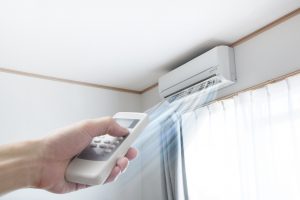
08 May Ductless AC Myths You Should Stop Believing
In life, there are plenty of myths and rumors that make their way into people’s heads and fabricate themselves as truth. When it comes to your home heating and cooling, a big victim of myths are ductless AC systems. Since we, at Wahl, want our customers to be informed with true information, here are a few ductless AC minutes you should stop believing.
Ductless AC’s is are bad for your indoor air quality.
Just like duct-based heating and cooling systems, ductless AC systems have filters that catch particles in the air and prevent them from being pushed throughout your home. You could even argue that they are better for your indoor air quality since they don’t have ducts that can store dust, pollen, and other air particles.
Ductless AC units are only good for new construction.
While, yes, these units are a great option for newly constructed homes or businesses, they work just as well for already existing buildings. So if you wanted to switch to this system in the home you’ve been living in for 15 years, it’s completely possible.
Ductless AC’s do not risk any energy loss.
We wish we could tell you that this was true, but in reality, no system is perfect. When used properly, ductless systems can lose less energy than central air systems, but they do not eliminate energy loss entirely. No matter what system you have, there will always be a chance of a small amount of energy loss.
Ductless AC units do not cool rooms evenly.
More often than not, ductless systems are used to cool only a room or two, so when you have them professionally installed and properly sized, they create an evenly cooled space with ease.
When it comes to finding the right cooling system for your home, trust the experts at Wahl Family Heating, Cooling, and Plumbing. With over 35 years of experiences serving the Pittsburgh metro area, we can handle any HVAC services you need. For more information or to schedule a service, give us a call at (412) 265-2662.

